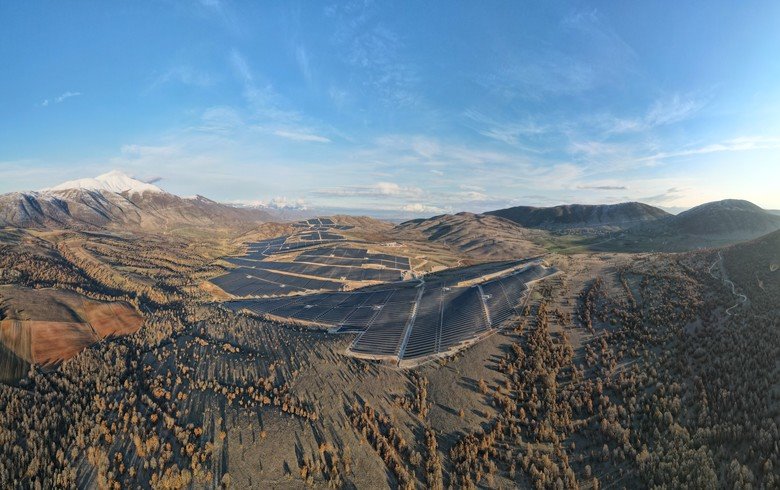
Hellenic Petroleum is undergoing transformation into clean energy – it put the largest solar park in Greece into operation and hinted it may add battery storage. It is the biggest system with bifacial panels in Europe.
A fossil fuel company has built a giant solar power plant using innovative technology in an area being transformed from a coal hub into a so far unseen model for progress in the energy sector and economic development in general.
Nevertheless, lignite production must be boosted sufficiently to avoid blackouts. All the contradictions came into the spotlight at the same time today as Hellenic Petroleum inaugurated its 204.3 MW solar power plant in Greece’s Western Macedonia region.
The photovoltaic plant in the Kozani area has two-sided or bifacial solar panels, the biggest of its kind in Europe, Energypress reported. Such devices use the reflection from the material placed underneath them, like white gravel, to boost output.
Greece’s dominant fuel and petrochemicals producer and retailer said the facility is the largest operational renewable energy project in Greece and the northeastern Mediterranean and one of the biggest solar power plants in Europe. Hellenic Petroleum, also known by its acronym ELPE or HELPE, said it is an example of its rapid transition to cleaner forms of energy.
The system can be expanded with 125 MW in battery storage power, with the capacity of 350 MWh, the company said. The country’s coal production will be boosted by 50% this year while coal-fired thermal power plant Ptolemaida 5, which is under construction, is set to use lignite until 2028, Mitsotakis said. He added old coal plants Agios Dimitrios 5 and Meliti would remain active for longer if necessary.
Despite earlier suggestions that Ptolemaida 5 could be switched to gas by 2025 and end the coal era in Greece, the government recently said the fossil fuel would be phased out by 2028 at the latest. An increase by half would take coal production in the country to 15 million tons this year.
The photovoltaic plant in Greece’s north spans 440 hectares.
It consists of 18 units connected to the same substation, with a 12-kilometer high-voltage link. The project’s former owner Juwi was responsible for the construction while supervision was handled by Hellenic Petroleum’s subsidiary Asprofos.
Annual output is estimated at 350 GWh, equivalent to the consumption of 75,000 households in Greece. Carbon savings are seen at 320,000 tons per year. The investment is valued at EUR 130 million, with a 40% participation of domestic materials, equipment and labor.
The Hellenic Petroleum Group of Compaines is implementing its investment program Vision 2025, one of the largest in Greece, with the aim to cut its environmental footprint by 50% by 2030, Chief Executive Officer Andreas Siamisiis said. He added the firm has a goal to develop 1 GW in renewable energy capacity by 2026 and 2 GW in total by the end of the decade.
Hellenic Petroleum also participates in the ambitious White Dragon project along with many other Greek and European players under DEPA Trading, also called DEPA Commercial. Its goal is to jumpstart the green hydrogen market in Greece with production facilities. The plan calls for EUR 8 billion in investments.
Siamisiis recently announced that within the first half of 2022 the final investment decision would be made for the construction of a natural gas–fired power plant in Greece, with a capacity of 826 MW.